Table of Contents
Looking for the best seasonings for pasta sauce? The top 10 essential seasonings for perfect pasta sauce are: salt, black pepper, garlic, oregano, basil, red pepper flakes, parsley, thyme, fennel seeds, and bay leaves. For a basic 4-cup tomato sauce, use 1 teaspoon salt, 1/2 teaspoon black pepper, 1 teaspoon dried oregano, 1 tablespoon fresh basil (or 1 teaspoon dried), 2-3 minced garlic cloves, and a pinch of red pepper flakes. Add hardy herbs early in cooking and delicate herbs at the end for optimal flavor.
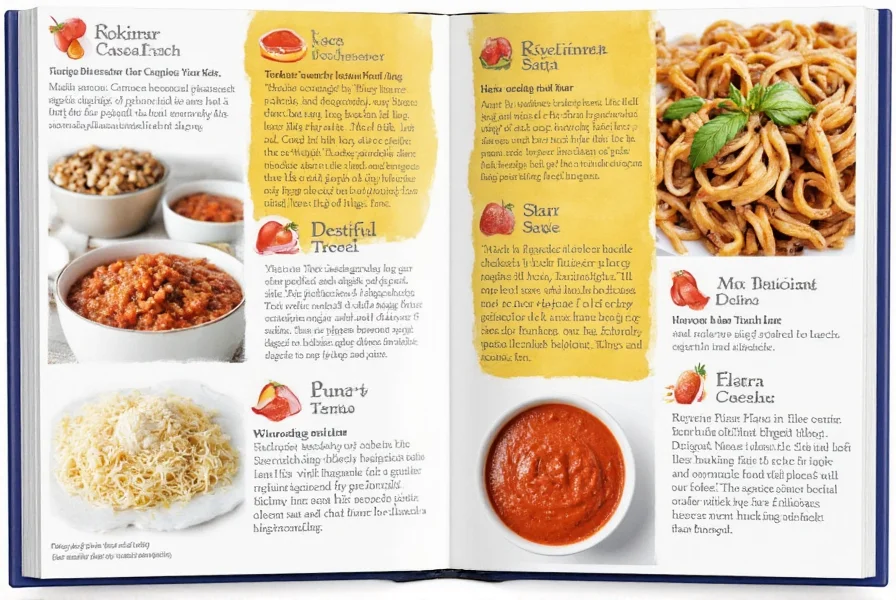
Essential Seasonings for Pasta Sauce
When searching for the best seasonings for pasta sauce, these 10 ingredients form the foundation of authentic Italian flavor. Understanding which seasonings work best for different sauce types is crucial for restaurant-quality results at home.
- Salt: The flavor enhancer that brings out natural tomato sweetness. Use kosher salt for better control.
- Black Pepper: Freshly ground provides sharp, pungent notes that balance acidity.
- Garlic: Essential for depth; 2-3 cloves per 4 cups of sauce is ideal.
- Oregano: Earthy backbone for tomato sauces (1 tsp dried per 4 cups sauce).
- Basil: Bright top note (2 tbsp fresh or 1 tsp dried per 4 cups sauce).
- Red Pepper Flakes: For heat lovers (1/4-1/2 tsp per 4 cups sauce).
- Parsley: Fresh finish with grassy notes (added at the end).
- Thyme: Woody complexity for slow-simmered sauces.
- Fennel Seeds: Licorice undertone perfect for meat sauces (1/2 tsp).
- Bay Leaves: Subtle earthiness (remove before serving).
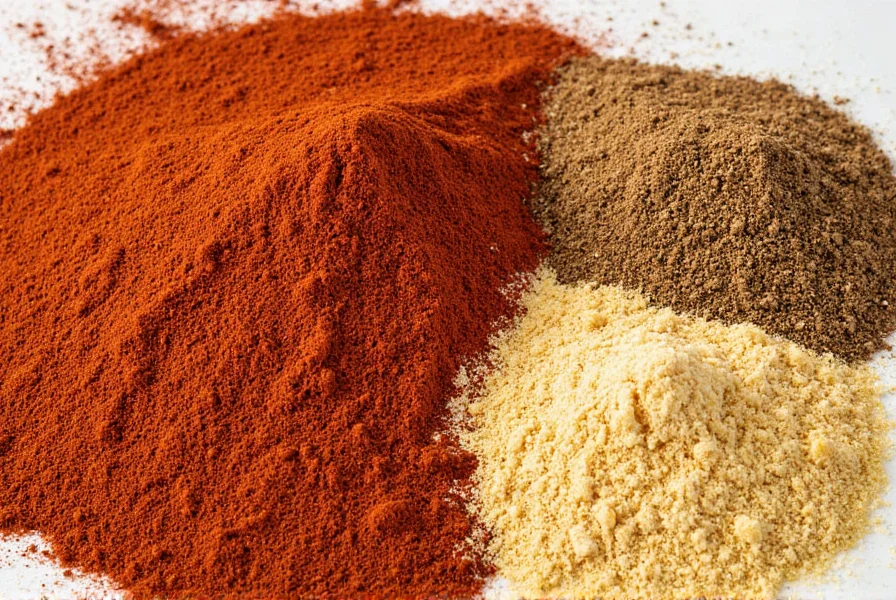
Flavor Profiles and Best Pairings
Knowing which seasonings work best for specific pasta sauces ensures balanced flavor development. This comprehensive guide shows exact applications:
| Seasoning | Flavor Profile | Best Sauce Types | Optimal Amount (per 4 cups) |
|---|---|---|---|
| Oregano | Earthy, slightly bitter | Marinara, Arrabbiata, Meat sauces | 1 teaspoon dried |
| Fresh Basil | Sweet, aromatic | Marinara, Pesto, Fresh tomato sauces | 2 tablespoons chopped |
| Parsley | Grassy, bright | All sauces (finishing) | 1 tablespoon chopped |
| Dried Thyme | Woody, herbal | Slow-cooked meat sauces, Bolognese | 1/2 teaspoon |
| Fennel Seeds | Licorice-like, sweet | Meat sauces, Sausage-based sauces | 1/2 teaspoon |
| Red Pepper Flakes | Fiery, spicy | Arrabbiata, Spicy tomato sauces | 1/4-1/2 teaspoon |
| Garlic | Pungent, savory | All-purpose | 2-3 cloves |
| Black Pepper | Sharp, warm | All sauces | 1/2 teaspoon |
| Salt | Flavor enhancer | All sauces | 1 teaspoon (adjust to taste) |
| Bay Leaves | Subtle earthiness | Slow-simmered sauces | 1 leaf (remove before serving) |
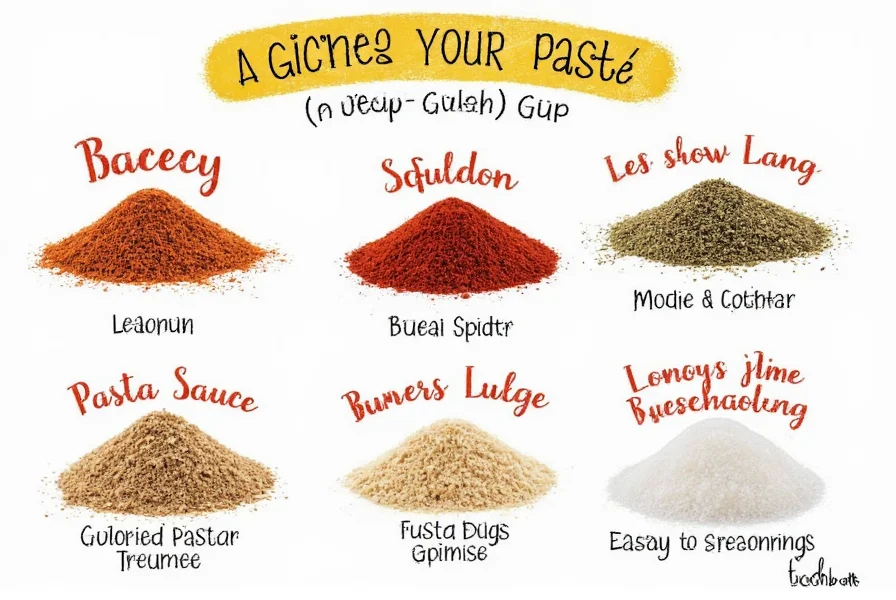
Perfect Seasoning Ratios for Common Sauces
Getting the seasoning ratios right is critical for balanced pasta sauce. These professional chef-tested ratios solve the most common "why does my pasta sauce taste bland" searches:
- Classic Marinara (4 cups): 1 tsp salt, 1/2 tsp black pepper, 1 tsp oregano, 2 tbsp fresh basil, 3 garlic cloves, 1 bay leaf. Add oregano at start, basil in last 5 minutes.
- Creamy Alfredo (4 servings): 1/2 tsp salt, 1/4 tsp white pepper, pinch nutmeg, 2 tbsp fresh parsley. Never add dried herbs to cream sauces.
- Arrabbiata Spicy Tomato (4 cups): 1 tsp salt, 1/2 tsp black pepper, 1 tsp oregano, 1 tbsp fresh basil, 3 garlic cloves, 1/2 tsp red pepper flakes. Add half the pepper flakes at start, half at end.
- Meat Bolognese (6 cups): 1.5 tsp salt, 3/4 tsp black pepper, 1.5 tsp oregano, 1 tbsp fresh basil, 4 garlic cloves, 1/2 tsp fennel seeds. Bloom spices in oil before adding meat.

Pro Tips for Perfectly Seasoned Pasta Sauce
Professional chefs follow these seasoning techniques that home cooks often miss:
- Layer your seasonings: Add hardy herbs (oregano, thyme) at the beginning to infuse flavors, delicate herbs (basil, parsley) in the last 5 minutes.
- Bloom spices in oil: For deeper flavor, sauté dried spices in olive oil for 30 seconds before adding tomatoes.
- Balance acidity: If sauce tastes too acidic, add 1/4 tsp sugar or a grated carrot (remove after cooking).
- Underseason initially: Flavors intensify as sauce simmers; you can always add more but can't remove excess.
- Finish with fat: A tablespoon of butter or olive oil at the end creates a restaurant-quality finish.
- Rest your sauce: Let sauce sit off heat for 15 minutes before serving; flavors meld beautifully.
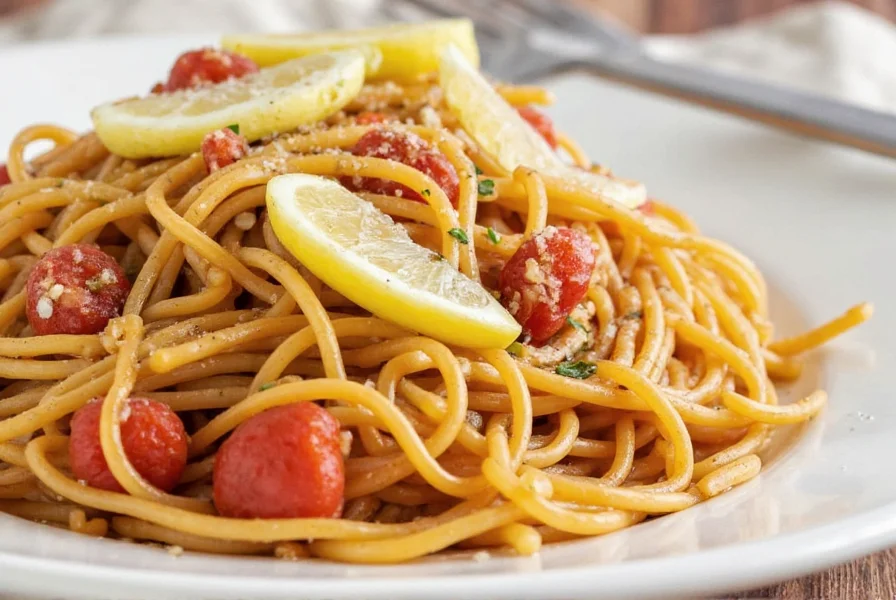
Common Seasoning Mistakes to Avoid
Avoid these pitfalls that make pasta sauce taste bland or overwhelming:
- Adding all seasonings at once: Different herbs require different cooking times to maximize flavor.
- Using old spices: Dried herbs lose potency after 6-12 months; test by rubbing between fingers.
- Overusing red pepper flakes: Start with 1/8 tsp and build up; you can't remove excess heat.
- Seasoning before tasting: Always taste before adding more salt or pepper.
- Using dried basil in fresh sauces: Dried basil turns bitter in quick-cooking sauces; use fresh instead.
- Skipping the resting period: Sauce flavors need time to meld; rushing to serve yields flat taste.
Frequently Asked Questions About Pasta Sauce Seasonings
What are the essential seasonings for a basic pasta sauce?
The essential seasonings for a basic pasta sauce include salt, black pepper, garlic, oregano, and basil. These create a solid foundation for most tomato-based sauces. Salt brings out the natural flavors, garlic adds savory depth, while oregano and basil provide that classic Italian herb profile. For a more complex flavor, many cooks also add a pinch of red pepper flakes for heat and a bay leaf for subtle earthiness.
How much seasoning should I add to my pasta sauce?
The amount of seasoning depends on personal preference and the quantity of sauce you're making. As a general guideline: for 4 cups of tomato sauce, start with 1 teaspoon of salt, 1/2 teaspoon black pepper, 1 teaspoon dried oregano, 1 teaspoon dried basil (or 2 tablespoons fresh), and 2-3 minced garlic cloves. Always add seasonings gradually, tasting as you go. Remember that flavors intensify as the sauce simmers, so it's better to start with less and add more as needed.
When is the best time to add seasonings to pasta sauce?
Different seasonings should be added at different stages for optimal flavor. Hardy herbs like oregano, thyme, and bay leaves should be added early in the cooking process to allow their flavors to infuse the sauce. Garlic should be sautéed at the beginning to mellow its sharpness. Delicate herbs like fresh basil and parsley should be added near the end of cooking to preserve their bright flavor and color. Salt and pepper should be adjusted throughout the cooking process, with final adjustments made just before serving.
What's the difference between using fresh vs. dried herbs in pasta sauce?
Fresh and dried herbs have distinct flavor profiles and uses. Dried herbs are more concentrated and work well in long-simmering sauces where they have time to rehydrate and release their flavors. As a general rule, use 1 teaspoon of dried herbs for every 1 tablespoon of fresh herbs. Fresh herbs provide a brighter, more vibrant flavor and are best added toward the end of cooking or as a garnish. Some herbs like oregano and thyme retain their flavor well when dried, while others like basil and parsley show more noticeable differences between fresh and dried forms.
Can I use Italian seasoning instead of individual herbs?
Yes, Italian seasoning is a convenient blend that typically contains oregano, basil, rosemary, thyme, and marjoram. It's a good option when you want a balanced herb flavor without measuring multiple individual herbs. However, store-bought blends can vary in quality and proportions, so they might not give you the exact flavor profile you're looking for. For more control over your sauce's flavor, using individual herbs is recommended. If using Italian seasoning, start with 1-2 teaspoons for a standard batch of sauce and adjust to taste.
How do I fix an over-seasoned pasta sauce?
If your sauce is too salty, try adding a peeled raw potato to absorb excess salt (remove after 15-20 minutes), or dilute with unsalted tomato sauce or water. For too much acidity, add a small pinch of sugar or a grated carrot. If it's too spicy, add more tomatoes, a splash of cream (for tomato-cream sauces), or a bit of dairy like butter or cheese. For overwhelming herb flavors, try adding more base ingredients to dilute the flavor or a small amount of acid (like lemon juice) to balance the flavors. Remember that flavors often mellow as the sauce sits, so sometimes just letting it rest can help.
What seasonings work best for specific types of pasta sauces?
Different pasta sauces benefit from specific seasonings: Marinara (tomato-based) works best with oregano, basil, garlic, and red pepper flakes; Alfredo (cream-based) pairs well with nutmeg, white pepper, and fresh parsley; Pesto shines with fresh basil, pine nuts, and Parmesan; Arrabbiata needs generous red pepper flakes for heat; Carbonara benefits from black pepper and pecorino cheese; Puttanesca requires capers, olives, and anchovies along with oregano. Always remember that the best seasoning depends on your personal taste, so feel free to experiment!
How long do seasoning ingredients stay fresh?
Fresh herbs last 1-2 weeks in the refrigerator when stored properly. Dried herbs maintain peak flavor for 6-12 months, while ground spices are best within 6 months of opening. Whole spices can last up to 2 years. Store all seasonings in airtight containers away from light, heat, and moisture. To test if dried herbs are still potent, rub a small amount between your fingers - if the aroma is weak, it's time to replace them. Garlic and onions lose potency quickly once cut, so use fresh ones soon after preparation.
Buying Guide for Quality Seasonings
Choosing the right seasonings impacts your sauce quality significantly. These top-rated options deliver maximum flavor:
1. Penzey's Italian Herb Blend
This premium blend contains high-quality oregano, basil, thyme, and rosemary with no fillers. Unlike generic supermarket blends, Penzey's uses fresh, potent herbs that haven't lost flavor during long storage.
Why it's best for pasta sauce: Perfect ratio of herbs specifically formulated for Italian cooking; maintains freshness longer due to opaque packaging
Pro tip: Add during the sauté phase for maximum flavor extraction in tomato sauces
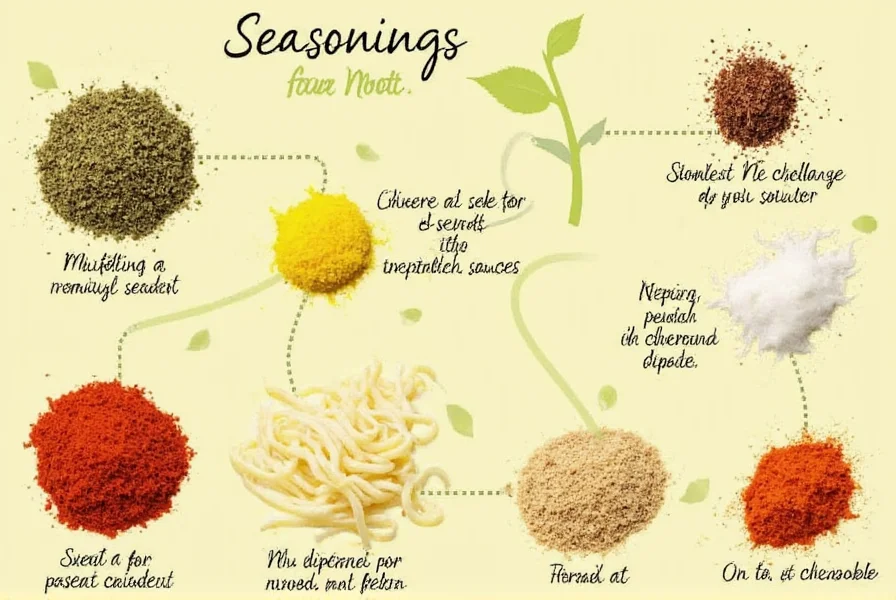
2. Starwest Botanicals Organic Dried Oregano
Professional chefs prefer this oregano for its robust flavor and authentic Mediterranean profile. The leaves are carefully dried to preserve essential oils.
Why it's best for pasta sauce: Higher oil content means more flavor per teaspoon; non-irradiated for pure taste
Pro tip: Crush between fingers before adding to release maximum flavor compounds
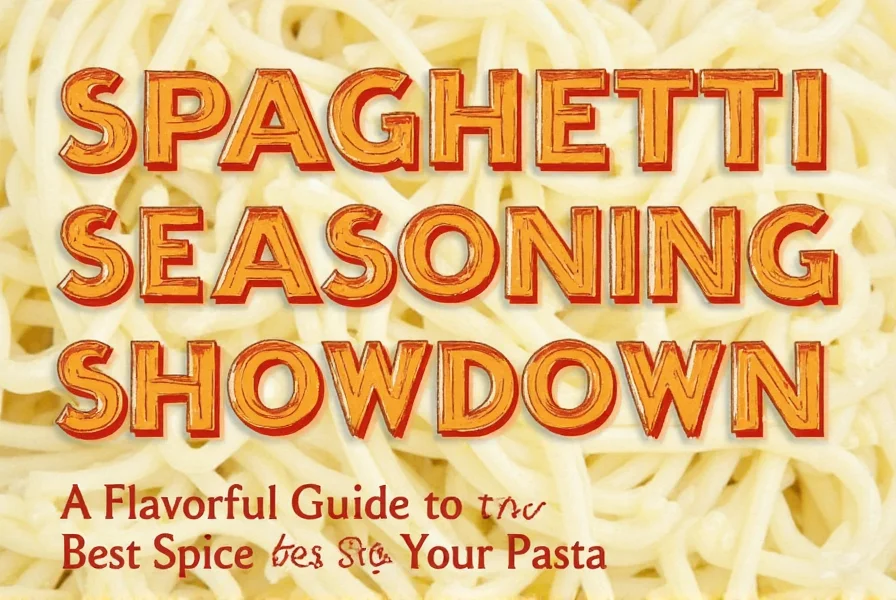
3. Frontier Co-op Garlic Powder
Made from dehydrated garlic with no anti-caking agents, this powder delivers consistent garlic flavor without the variability of fresh cloves.
Why it's best for pasta sauce: Perfect for consistent results in meal prep; dissolves completely without bitter notes
Pro tip: Use 1/8 teaspoon per serving as a base layer before adding fresh garlic

4. Simply Organic Ground Black Pepper
Freshly ground from premium Tellicherry peppercorns, this pepper has complex floral notes that enhance rather than overpower.
Why it's best for pasta sauce: Larger grind size preserves volatile oils; noticeably better than pre-ground supermarket options
Pro tip: Add half during cooking, half just before serving for layered pepper flavor
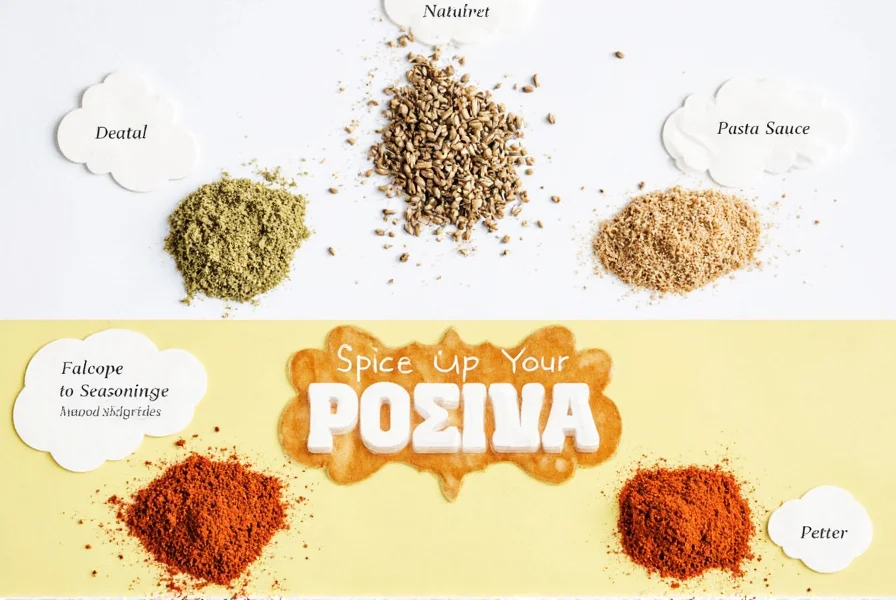
5. Morton's Kosher Salt
The flat flakes provide better control for seasoning, dissolving perfectly without saltiness pockets.
Why it's best for pasta sauce: Ideal crystal structure for even distribution; preferred by professional chefs for sauce seasoning
Pro tip: Use 1/2 teaspoon less than table salt due to larger crystal size


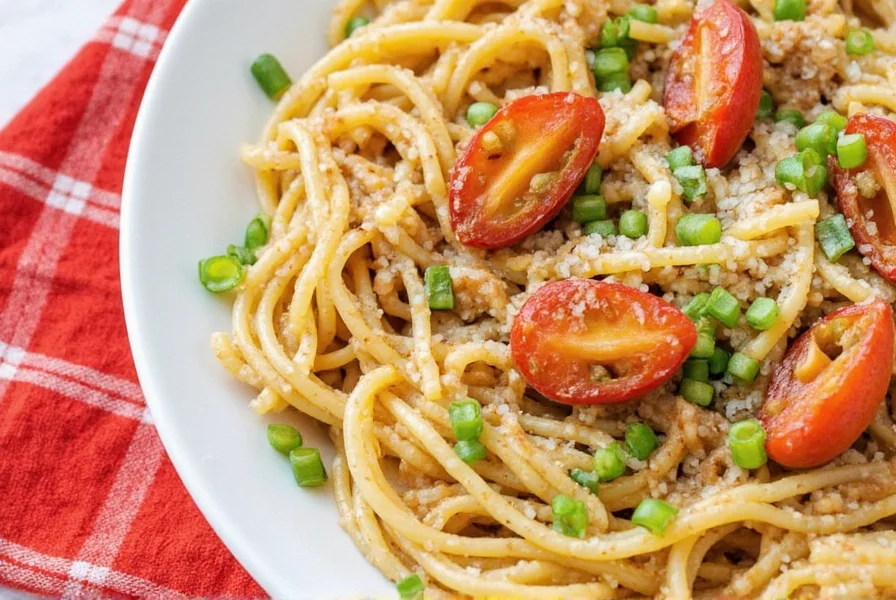









 浙公网安备
33010002000092号
浙公网安备
33010002000092号 浙B2-20120091-4
浙B2-20120091-4